The number of patients suffering from osteochondrosis is increasing every year, and the disease is irresistibly young -several decades ago this problem is the most for the elderly, but now it is often felt even to those who do not even have the most of its firing forms.In addition to the constant pain that interferes with normal life, osteochondrosis without timely medical attention is filled with serious complications, which means that it is very important to recognize its first signs in time and to begin the fight against it.
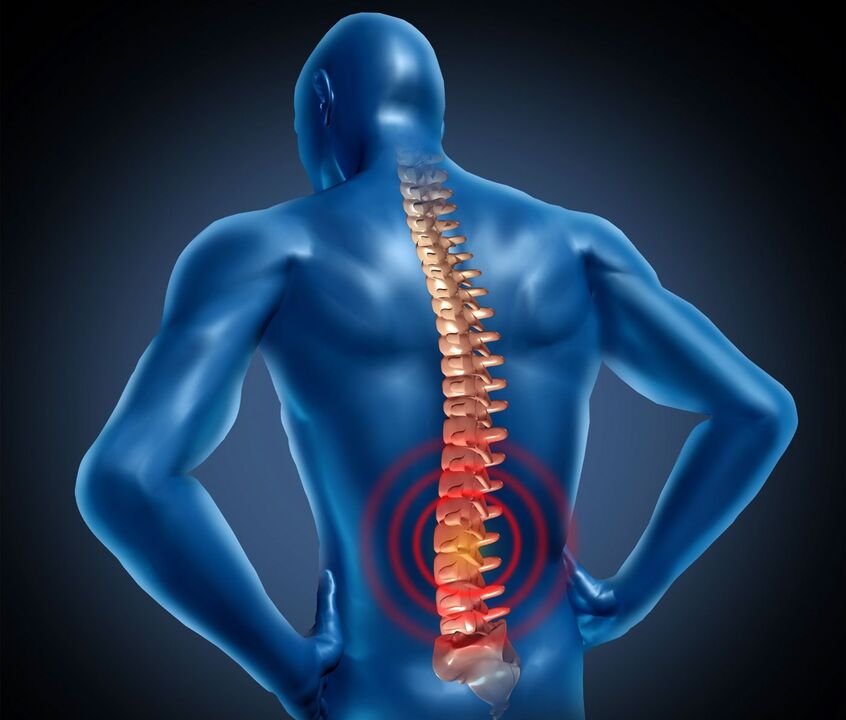
Where does osteochondrosis come from
The question is far from simple because there are really many factors capable of provoking this disease.It can be both physiological characteristics of the body and an unhealthy lifestyle, diet or even a genetically laid program.In general, one of the main causes of the development of lumbar osteochondrosis can be distinguished:
- improper distribution of spinal load (improper posture, bad mattress or office chair, etc.);
- A sedentary lifestyle;
- frequent tensions;
- unhealthy habits;
- a scarce diet leading to a deficiency of the required vitamins and trace elements;
- hypothermia;
- Pathology of the structure of the musculoskeletal system, such as spinal curvature, flat legs, etc.;
- overweight;
- impaired metabolism;
- spinal injuries;
- transferred infectious diseases;
- chronic inflammatory processes, mainly related to joint diseases;
- Genetic predisposition.
The risk group also includes people whose professional activities are related to significant loads, such as athletes and those who have to be in the same posture for a long time: teachers, office workers, drivers, waiters, hairdressers and more.
In addition, osteochondrosis is often the result of other diseases, for example, liver or gastrointestinal tract disorders (in approximately 30% of patients), heart, as well as inflammation of the ovaries in women and prostatitis in men.In this case, existing pathologies provoke muscle and vascular cramps, causing oxygen to starve and dystrophic changes.Accordingly, the tissues that form vertebrae and intervertebral discs suffering from lack of nutrition are gradually destroyed - osteochondrosis of the lumbar region develops.
Symptoms of the disease
At what signs can be recognized in a person osteochondrosis of the lumbar spine and is it realistic to do so while the disease is picking up speed?Unfortunately, in the early stages, this disease in many cases occurs almost asymptomatic and mild discomfort in the back, occurring from time to time, most often it is written off to normal fatigue.This is his main danger - while osteochondrosis can still cope without consequences, it is difficult to detect and when the problem becomes obvious, it is much more difficult to slow down pathological processes.
The most important sign of this pathology is severe pain in the lower back, often spreading throughout the back, butt and legs.In the first stages, it hurts mostly or pulls and occurs only after exercise or sudden movements.Over time, periods of relative lull, when the patient does not experience pain and discomfort, become shorter and gradually unpleasant sensations in the lower back become his constant satellites.In addition, there are exacerbations when the pain becomes intense and acute and even the most unknown load can cause an attack, cough or sneezing.
There are additional signs of lumbar osteochondrosis:
- hardness of movements;
- reduction of sensitivity and numbness in the legs;
- sweating impairment;
- muscle weakness;
- Dry and peeling of the skin.
In the last stages, patients may have difficulty in control of urination and bowel movements due to pinching the spinal cord, and patients in men have erectile dysfunction.
Lumbar osteochondrosis
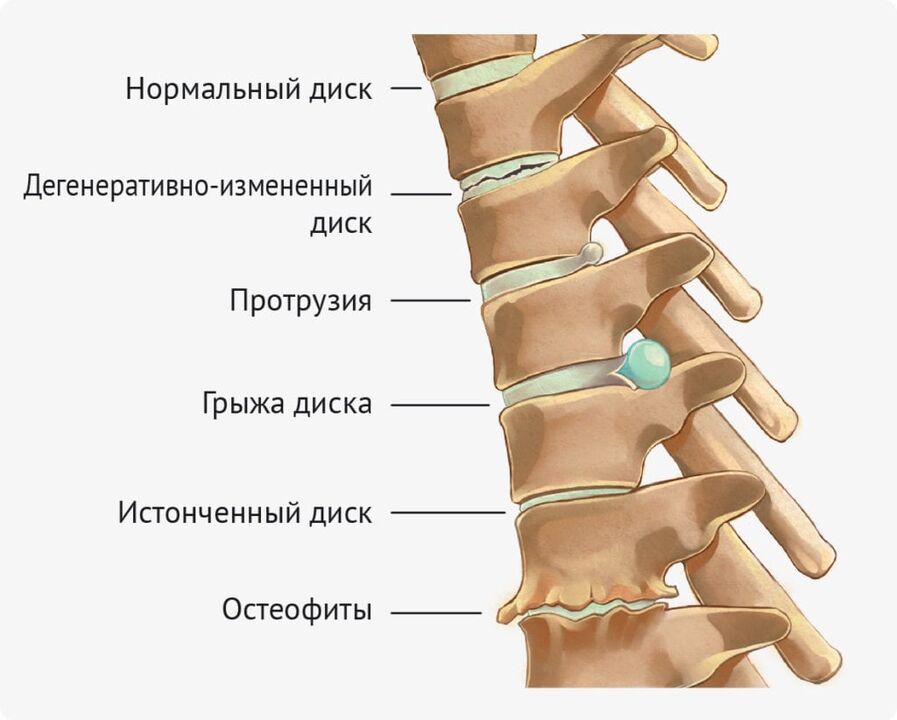
There are 4 main stages of the disease development in total.For 1, the deformation of the intervertebral discs is poorly expressed - these are small cracks in the fibrous ring that cause unpleasant sensations.First -degree osteochondrosis is characterized by paroxysmal pain, which occurs only with acute movements and weight lifting.We're talking about lumbago, that is, bastards in the lower back in response to an attempt to change the uncomfortable position of the body.In addition, in the 1 stage of the disease, patients often suffer from muscle cramps and swelling.
Lumbar osteochondrosis of grade 2 begins with lumbalgia - pain and discomfort increase and appear regularly, and to improve well is no longer enough, just to lie down a little and relax.The process of destroying the fibrous ring continues, and the vertebrae themselves acquire unhealthy mobility - the distance between them decreases and the nerve endings are pressed.As a result, the patient has intense pain, as well as an alternative feeling of heat and cold, increased sweating and numbness of the skin.
Stage 3 of osteochondrosis is the period of formation of intervertebral hernias.The fibrous ring breaks down and the contents of the nucleus, pushing the vessels and nerve roots, falls out.At the same time, the patient is tormented by acute pain that pursues him almost without rest.Periodically in the affected area, sensitivity decreases or completely disappears, and in other cases, on the contrary, it can increase painfully and accompanied by a feeling of tingling and burning.At this stage of osteochondrosis, even a non -specialist may notice the deformity of the spine - patients develop the curvature of the spine according to the type of lordosis, kyphosis or scoliosis.
The fourth degree of the disease is the worst - the spine is very deformed, patients suffer from constant pain and every movement for them becomes a real problem.This is due to the almost complete destruction of the intervertebral discs, resulting in the vertebrae as close as possible or even in contact with each other.In this case, spinal cord pressure can lead to paralysis of the lower limbs.If you do not start treatment on time by going to the fourth stage, osteochondrosis is able to turn a person with disabilities for the rest of your life.
Diagnosis of osteochondrosis
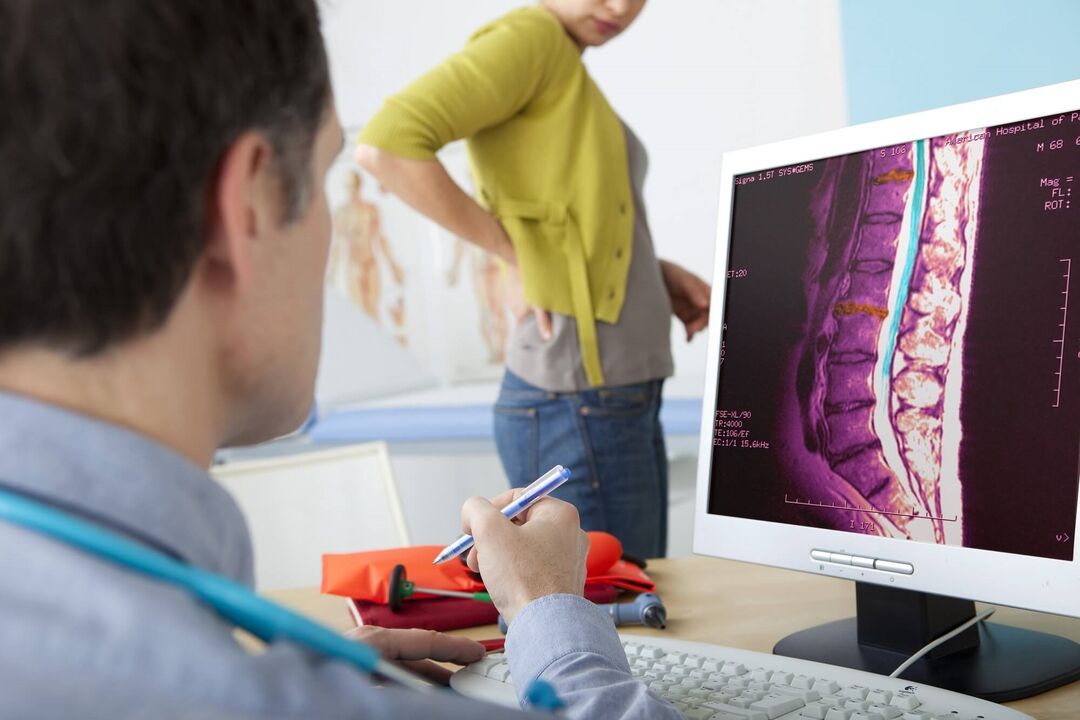
With lower back pain, most patients first go for advice to the therapist, who, if appropriate symptoms, sends them for additional examination to a neurologist.He, in turn, conducts a check, collects anamnesis and prescribes hardware studies to make an accurate diagnosis and to determine the degree of neglect of the disease.
During the history of the anamnesis, the main task of the specialist is to discover the nature of the unpleasant sensations, their localization, intensity and duration, and also to understand what frequency the exacerbations of the disease, which, as a rule, are preceded and what measures carry the patient's relief.Also, to make a diagnosis, the lifestyle of the patient, his or her usual diet, the characteristics of professional activity, injuries and existing diseases, including hereditary, are important.
The check allows you to evaluate the patient's motor capacity (stand, gait, volume of movement), the presence of tones and muscle cramps, and to determine the level of sensitivity in the affected area.
However, you can only get a complete picture with the help of hardware tests: radiography, CT and MRI.X -Ray allows you to see disorders of your spine structures, evaluate the condition of the intervertebral discs and on time to recognize the tendency to reduce the lumen between the vertebrae.Computed tomography in this case is more information - it allows to literally look inside the spine and to study existing pathologies.A NMR, in turn, provides comprehensive information about the condition of the spinal cord, nerve endings, muscles and blood vessels, which is extremely important not only for the diagnosis of "lumbar osteochondrosis", but also for determining the degree of neglect of the disease.
Methods of treatment
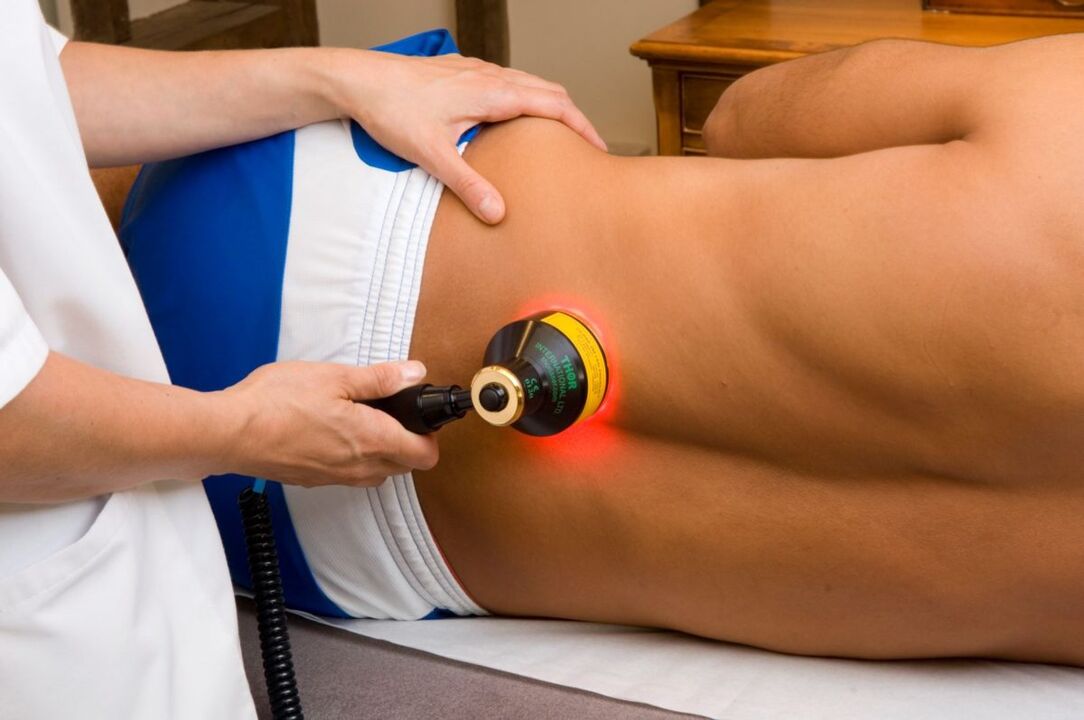
In order to successfully deal with lumbar osteochondrosis, patients need complex therapy, mandatory treatment with medicines, physiotherapy procedures, special gymnastics, massage, as well as the use of traditional medicine recipes that improve the effect of using traditional methods.
The priority task, which must be solved by starting the treatment of lumbar osteochondrosis, is the relief of pain syndrome, since many therapeutic methods such as physiotherapy and exercise cannot be used during the exacerbation of the disease.For this purpose, patients are prescribed painkillers and injections, as well as non -steroidal anti -inflammatory drugs.The latter is the main component of drug treatment of osteochondrosis - they deal not only with its symptoms, but also affect the causes that cause their appearance.In the most difficult cases, glucocorticosteroids are used to combat the inflammatory process, which are most often introduced directly into deep tissues in the area of damage, along with novocaine or lidocaine.
In addition, patients with osteochondrosis need preparations to remove muscle spasms - anticonvulsants and muscle relaxants, chondroprotectors that restore damaged cartilage tissue and B vitamins that strengthen the body's protective functions and reduce inflammation.
After painting pain, physiotherapy procedures come to the fore in the treatment of osteochondrosis.We are talking about the use of laser therapy, magnetotherapy, ultrasound, electrophoresis, acupuncture, mud baths, paraffin applications, etc., which effectively deal with discomfort and pain and fix the result obtained from medication.
An important place in the fight against osteochondrosis of the lumbar region deviates with physiotherapy exercises - subject to regular performance, the sets of exercises specially designed in such a case significantly improve the patient's condition, returning his freedom of movement almost entirely.And professional massage will help to consolidate the successes that perfectly reach muscle cramps.The unconventional medicine, which offers osteochondrosis, plays an ulcerative role in this matter, not only effective in combating this disease, but also more fucked than many synthetic drugs.
Why is lumbar osteochondrosis dangerous?
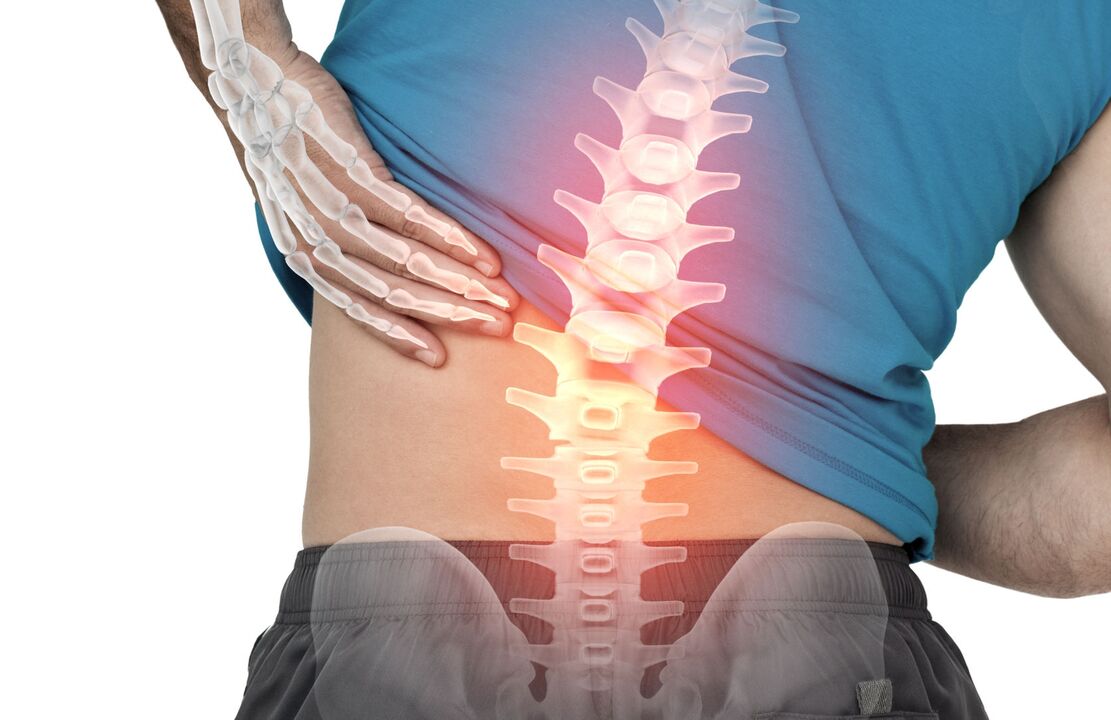
In addition to the intense pain that often makes the life of a patient with lumbar osteochondrosis really unbearable, people with such a diagnosis are limited by the motor capacity and in the last stages of the disease, some of them can be lost completely.We are talking about paralysis of the lower limbs that can develop as a result of compression of the spinal cord.In the most extreme case, osteochondrosis is able to lead to even death if there is significant damage to the spinal cord.
But without even reaching 4 stages, lumbar osteochondrosis seriously undermines human health.It often ends with the formation of intervertebral hernias, which requires prolonged and complex treatment, and in some cases surgery.In addition, the pressure of blood vessels, which is characteristic of osteochondrosis, can lead to the formation of dangerous stagnation and disrupt the function of other internal organs.In patients with such a diagnosis, the geniological system often suffers - lumbar osteochondrosis is able to cause ovarian problems, uterus and appendages in women and erectile dysfunction in men.
Obviously, over time, they recognize the symptoms of osteochondrosis, seek help and start your complex treatment - the task is extremely important.But the role of prevention is no less important in this matter - with its help you can reduce the risk of developing the disease and maintain good health.We are talking about regular but moderate physical exertion, a healthy lifestyle, a balanced diet, adherence to drinking regimen and examinations of specialists who can identify possible problems in the largest stages.
It should be remembered that osteochondrosis of the lumbar region is a serious illness that is extremely dangerous for health to ignore the symptoms of which.Only by recognizing the disease on time and starting treatment can you slow down the pathological processes and return the patient to lead the opportunity to lead the usual lifestyle.Otherwise, the consequences may be the most payment, to the disabilities that the patient will no longer be able to get rid of.

























